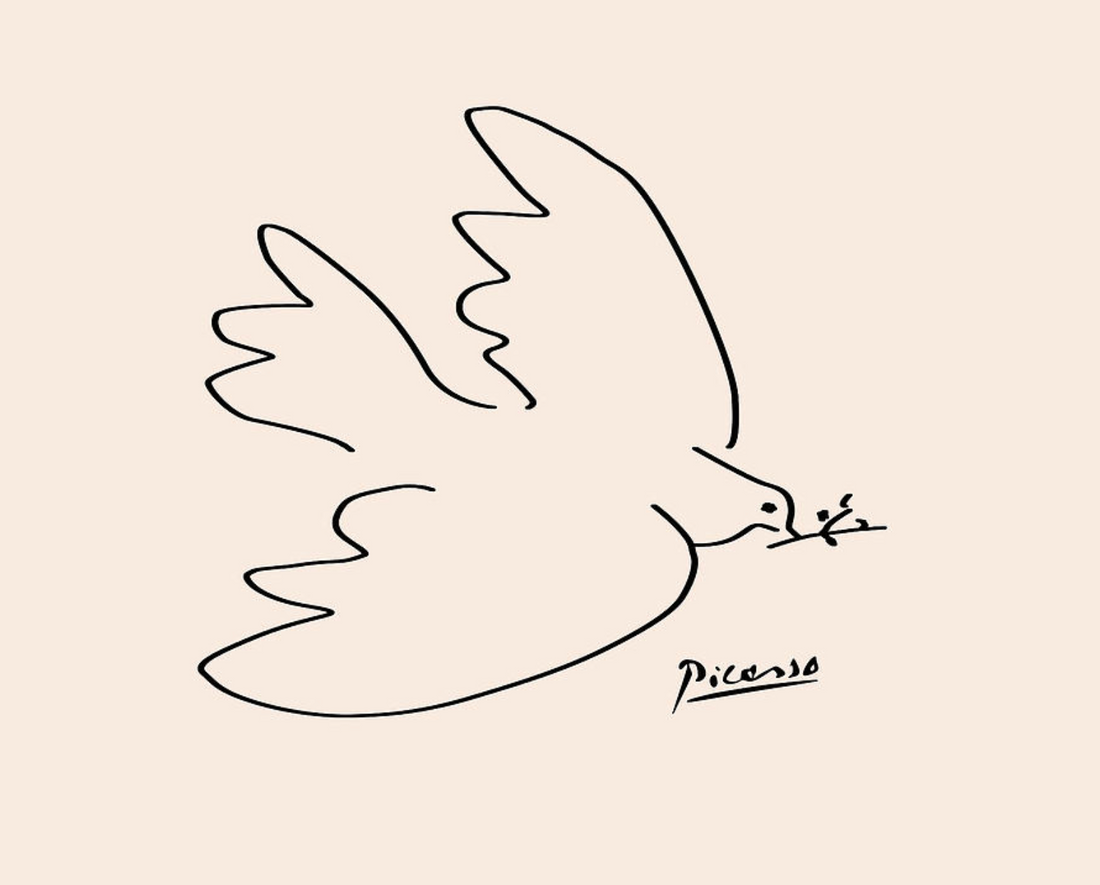For centuries, the dove and the olive branch have served as longstanding symbols of love, innocence, and peace across Western culture.
According to Greek mythology, doves were often associated with Aphrodite, the goddess of love, and the olive branch was typically attributed to Eirene, the goddess of peace. Roman poet Virgil likewise coined the olive branch as a token of peace and combatant to war in his epic poem, Aeneid:
'Resolve me, strangers, whence, and what you are; Your business here; and bring you peace or war?' High on the stern Aeneas his stand, And held a branch of olive in his hand.
While Western civilization has been stamped with these symbols—across religion, music, poetry, treaties, novels, and speeches—one historical figure shined a prominent light on them in the modern age. By highlighting these symbols, Pablo Picasso’s pieces honor their significance, nodding both to generations past and those to come.
a lifelong muse
Doves became a reoccurring motif throughout Picasso’s work, which may allude to his deep-rooted connection with them. For the artist, doves were a reminder of his father, who frequently painted the birds that were kept in his family’s Málaga home. In Picasso’s late adult life, he maintained this tradition and kept doves in his homes and studios across France.
In January 1949, another profound artist at that time, Henri Matisse, who shared Picasso’s love for birds, gifted his friend and rival a snow-white Milanese pigeon. Using the exotic pigeon as his model, Picasso created the lithograph Dove (1949), which brought the dove’s peaceful symbolism to an international front.

Dove paved avenues of opportunity, as not long after, Picasso was commissioned to create a poster spotlighting a dove for the Paris Peace Conference.
Picasso’s journey with doves gained momentum after this point. Numerous peace organizations and activists worldwide adopted the symbol, plastering it on posters, banners, and postage stamps to signal their commitment to peace.
This encouraged Picasso to reimagine the dove in a variety of whimsical illustrations, some more colorful than others but all distinctly featuring a dove carrying an olive branch—two potent emblems of peace throughout history. The addition of the olive branch was intentional on Picasso's part, as he also understood its historical significance, and it evoked peaceful memories of his childhood in Spain—a country known for its abundance of olive trees.

Dove of Peace, 1949, Pablo Picasso
Peace Posters
Variations of the Dove of Peace were used for peace congresses in Wroclaw, Stockholm, Sheffield, Vienna, Rome, and Moscow. Images were distributed around the world by the peace movement. These are a few examples from the series:


additional artwork
Five years after the bombs were dropped on Hiroshima and Nagasaki in 1950, Picasso illustrated this picture of peace in solidarity to what was lost:

Picasso’s second rendition of Dove of Peace in 1961 features sharper contour lines and a stark green olive sprig:

Dove of Peace, 1961, Pablo Picasso
This illustration was created in honor of Yuri Gagarin. Picasso’s portrait of the famed Soviet cosmonaut flying on a dove above Earth while holding an olive branch surely symbolizes the artist’s desire for peace and unity during the mid-twentieth century’s Space Race between the USSR and the USA.

Pour Gagarine (Youri Gagarine), 1961, Pablo Picasso
Focusing on vibrant colors and fluid lines, Picasso radiates an optimistic energy and childlike joy in this illustration. Depicted here are colorful figures holding olive sprigs in the air and dancing around a dove carrying an olive branch.

Dancing Around the Dove of Peace, 1961, Pablo Picasso
gallery
Up until his death in 1973, Picasso avidly continued to illustrate the beloved dove and olive branch in various ways. Below, you will find a few more examples of his work on this matter.









